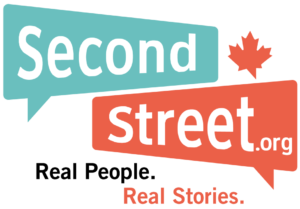SUN NEWS COLUMN: Government milk policy costs consumers dearly
“I knew there was a difference in the cost of milk and dairy in Canada versus the United States, but I didn’t actually know it was that big.”
That’s what Melissa From told SecondStreet.org when we sat down with her to compare milk prices between Canada and the United States. Melissa and her husband live just outside of Calgary and they have two young children so milk is in high demand.
Our research compared milk prices in 15 U.S. cities and 15 Canadian cities and concluded Canadian prices averaged almost thirty cents more per litre than in the U.S. (after taking exchange rates into account).
For instance, in Toronto, a litre of milk cost $1.10 yet just over the border in a suburb of Buffalo milk was just 62 cents (CDN $). In Calgary, a 2% jug of milk cost $1.14 per litre, but just over the border in Montana, the price worked out to 69 cents per litre (CDN $).
An extra 30 cents per litre doesn’t sound like a lot of money, but for a family like Melissa’s, that purchases eight litres of milk a week, the extra cost adds up quick. Melissa estimated that her family is spending an extra $100 or so more each year on milk compared with what Americans pay for the same volume.
But it doesn’t have to be this way.
A key reason why milk prices are higher in Canada than in the United States is a policy in Canada known as “supply management.”
Simply put, supply management means that the government controls how much milk, cheese, dairy and poultry products are produced each year by each farm. The government also regulates the price of those products. If production quotas are exceeded, perfectly good products are dumped.
But not only does the government ration these products, it also imposes very large tariffs on imports.
Together, these policies drastically reduce competition and lead to higher prices for Canadian consumers for milk, cheese, and your Christmas turkey to name a few products.
It would be one thing if these policies were designed to help out small farms in need, but Statistics Canada data suggests the average net worth of dairy farms in Canada was $4.3 million in 2017. For poultry farmers, their net worth was $6.0 million.
Thus, the government’s supply management system means consumers pay high prices to support some pretty wealthy farms.
Another common argument supply management proponents often put forward is that milk coming out of a Canadian cow’s udder is somehow better than the milk from an American cow’s udder.
It’s true that a small percentage of dairy producers in the U.S. use a hormone to help produce milk that isn’t allowed in Canada. But if the hormone is the stumbling block to allowing foreign milk into Canada (increasing competition), the government could simply require that any milk with hormones in it be clearly labelled; allowing Canadian consumers to choose for themselves.
Moreover, opening the market in Canada would also open up new markets for Canadian farmers to export their products.
There’s lots of talk in Ottawa these days about helping the middle class. Phasing out supply management could do just and wouldn’t cost taxpayers a penny.
Greater competition, it does your wallet good.
Colin Craig is the President of SecondStreet.org, a new Canadian think tank
This column was published in the December 1, 2019 edition of the Toronto Sun, Ottawa Sun, Winnipeg Sun, Edmonton Sun and Calgary Sun


